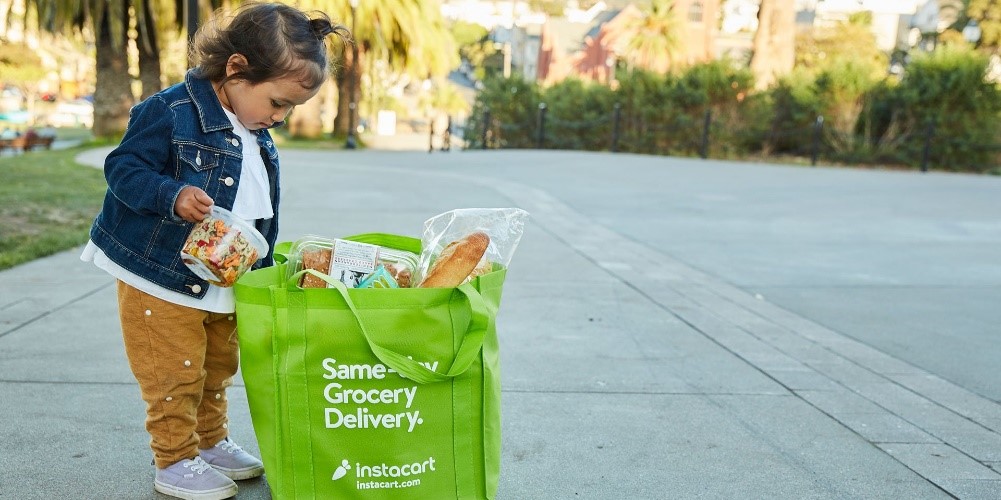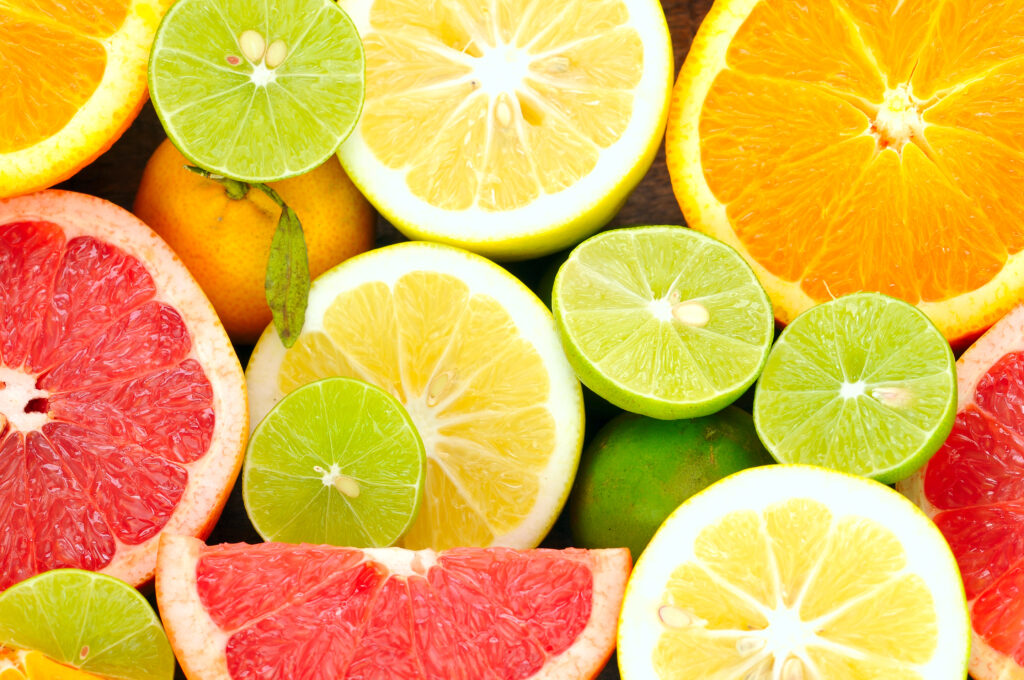
National Fruits and Vegetables Day
This week features #NationalFruitsandVegetablesDay and we’re celebrating with a variety of produce-centric recipes to try this season. Each with a unique variety of flavors and tastes for your summer fun. Whether it’s a main dish, side, or a treat to stay cool – we’ve got you covered with a summer’s worth of new dishes. Check them out below!
Grilled Vegetable Pasta Salad: Add a twist to your pasta salad with grilled veggies. They add a tasty crunch to a classic summer side.
Greek Stuffed Eggplant: Eggplant stuffed with delicious and refreshing ingredients.
Grilled Corn with Parmesan Spread and Basil: Corn is a summertime favorite, and ours is made locally. Throw it on the grill and add this flavorful parmesan.
Grilled Lemon Garlic Chicken Salad: A refreshing salad is perfect for the summer heat, and the lemony, garlicky aroma this recipe brings is a wonderful take.
Indian Spiced Cauliflower with Garbanzo Beans and Tomatoes: This recipe is packed with flavor, and it takes cauliflower, tomatoes, and garbanzo beans to a place you may not have tried before.
Grilled Veggie Quinoa Bowls: Quinoa bowls are super refreshing, and grilled veggies are a summer hit. Add them together for the perfect meal.
Hummus Stuffed Cherry Tomatoes: A delicious and light recipe. Perfect for an appetizer at your next cookout.
Watermelon Blueberry Pops: Cool down with these DIY Watermelon Blueberry Pops to complement your summer fun.
Campfire Skillet Strawberry-Peach Cobbler: Nights by the fire make for some of the best summer relaxation. This cobbler makes them even better.
Watermelon Bites: A tasty and refreshing appetizer or snack option.
Watermelon Pico De Gallo: Throw a summery twist into your dip by adding watermelon to your pico de gallo.
Crunchy Slaw with Creamy Lime Dressing: Coleslaw is another refreshing summer side dish. This tasty take might become a favorite.
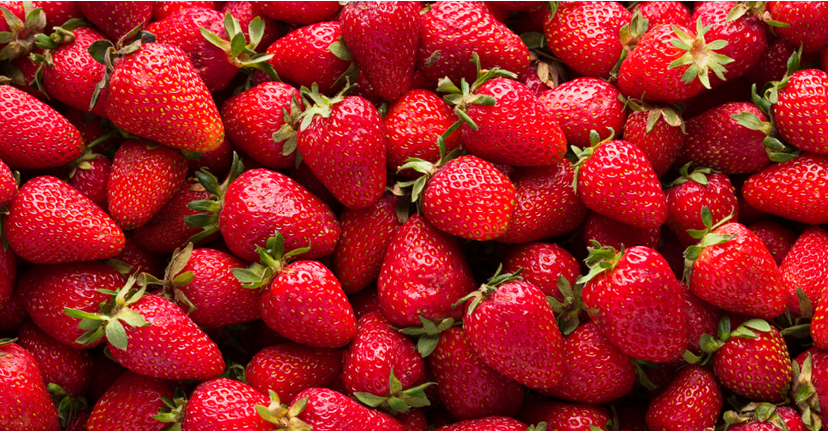
Mia Teal
Marketing Coordinator, Paid Media
Autumn is just around the corner, which signals the start of pumpkin and apple picking season! While this is a thrilling time, it also signifies that other fruits and vegetables are transitioning out of season, such as the delightful strawberry. Let’s take a deeper dive on the season of strawberries, and recipes you can make to ensure that these little fruits do not go to waste.
Peak strawberry season in the Northeast is late May to early July. However, different varieties of strawberries have different seasons. Yes, there are different types of these berries! This diversity allows you to savor the sweet delights of June-bearing strawberries during early summer picnics, transition to the ever-bearing strawberries for a late summer treat, and extend your strawberry indulgence into the crisp days of autumn with day-neutral varieties. Take a look below on these three types of strawberries.
- June-bearing Strawberries: June-bearing Strawberries, as their name implies, start ripening in the middle to late part of June. They are characterized by their larger size and longer lifespan compared to other strawberry varieties.
- Ever-bearing Strawberries: This type is prevalent in June and early fall. These are not as sweet as June-bearing Strawberries.
- Day-neutral Strawberries: Day-neutral Strawberries represent the final category and consistently produce berries throughout the summer and into the fall, maintaining a continuous yield.
Berry-good recipes you will love!
Bumbleberry Pie: A fresh mix of blueberries, blackberries, raspberries, and strawberries all baked in a warm pie? Who can say no? Try adding PICS Vanilla Ice Cream or PICS Whipped Cream to the pie.
Strawberry-Mango Salsa: This tropical dip will have your taste buds doing the salsa! Pair with PICS Tortilla Chips for the ultimate fiesta!
Strawberry Shortcake: Fresh berries & cream are a wonderful go-to on a Sunday morning!
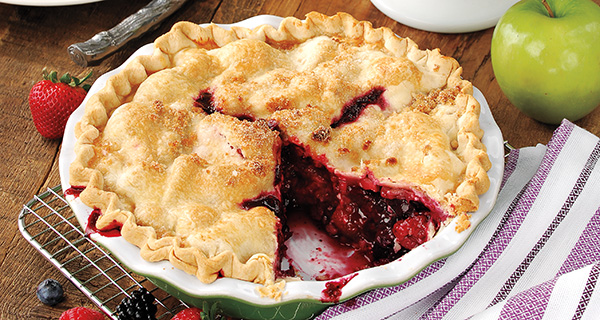
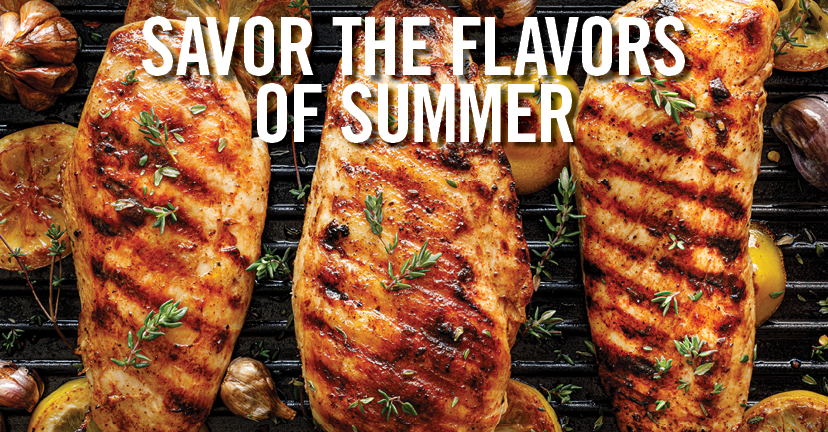
Mia Teal
Marketing Coordinator, Paid Media
Happy June and happy (almost) summer! It is safe to assume that the warm weather is now here to stay. We want to introduce you to some incredibly delicious summertime recipes that we think will be a hit at your parties this season. Below you will find eight popular summertime flavors and a mouthwatering recipe to go along with that. If you are interested in more recipes, be sure to check out our website, YouTube channel, and Price Chopper Ready website.
Flavor #1: Cherry
This cherry dessert has the consistency of a smoothie due to the vanilla yogurt. It is very refreshing on a warm summer day! Try adding in Triple Sec or Grand Marnier to take this to the next level.
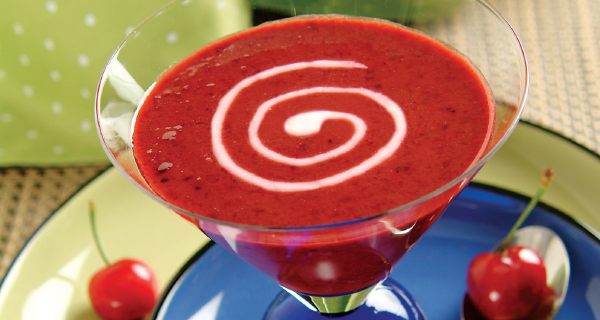
Flavor #2: Berry
Oh, how berry nice this dessert is! Only five simple ingredients, too? How sweet! Be sure to follow the instructions carefully when making this.
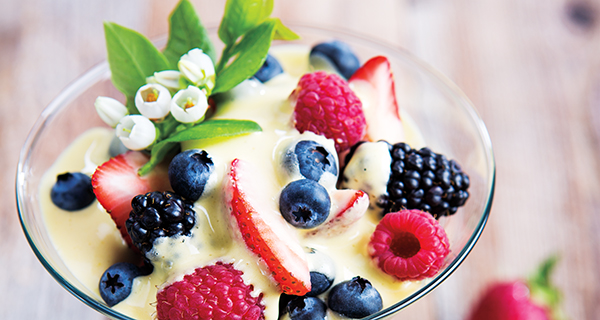
Flavor #3: Cucumber
Three ingredients for flavor #3! This plant-based recipe is perfect for an appetizer or snack this summer.
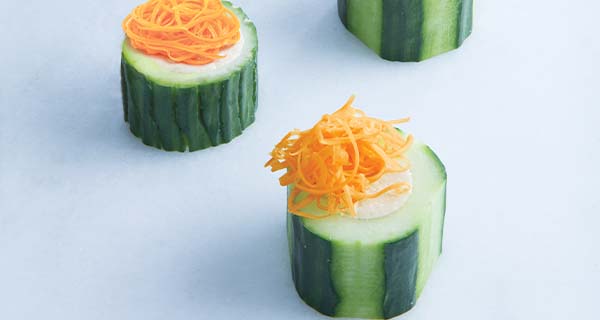
Flavor #4: Orange
Now this is what you call refreshing! All you need are clementines, oranges, coconut water, and dark chocolate.
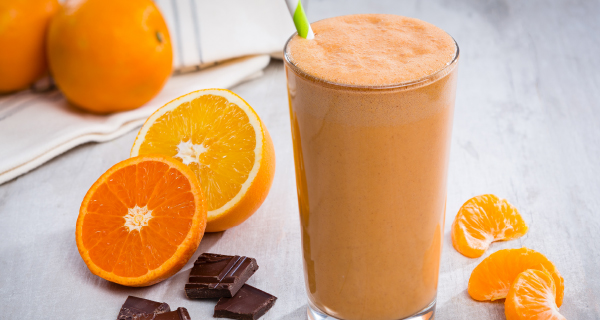
Flavor #5: Lemon
While lemon is a popular flavor year-round, we have a delicious lemon recipe for you below. Whether you are baking for Father’s Day, 4th of July, or just having a barbecue, this dessert is sure to be a hit.
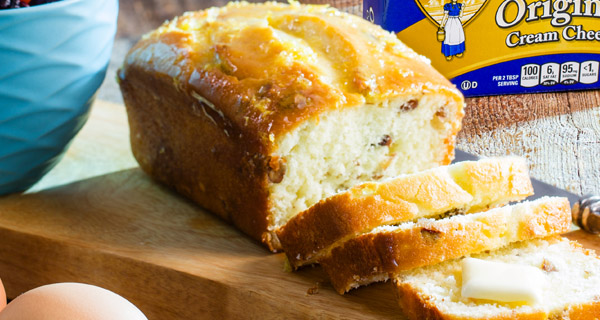
Flavor #6: Coconut
Coconut is one of the most popular summertime flavors. From piña coladas, coconut cream pie, coconut shrimp, and everything in between, coconut is a very versatile ingredient.
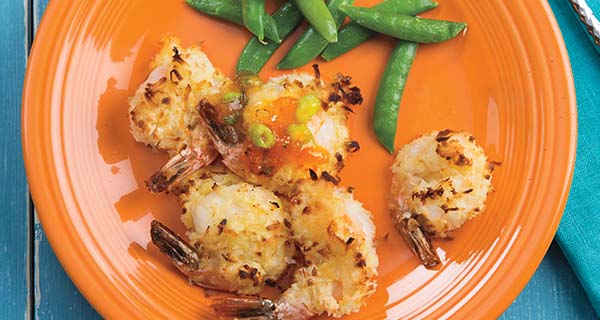
Flavor #7: Peach
Peaches are back in season! Bring on all the goodness that peaches have to offer!
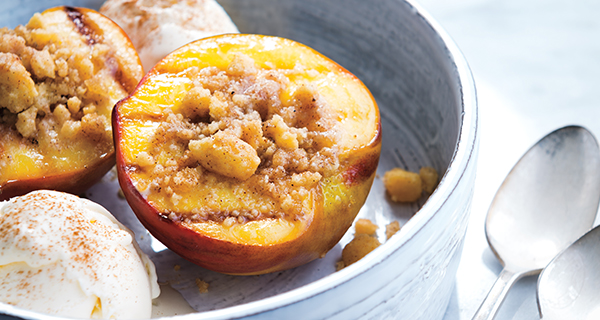
Flavor #8: Watermelon
Last but certainly not least – watermelon! This sweet and refreshing fruit pairs well in salads, on meat, or with cheese.
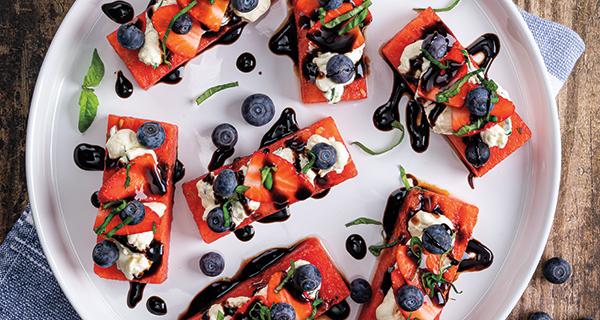
Enjoy the beauty of summer and all the recipes it has to offer!
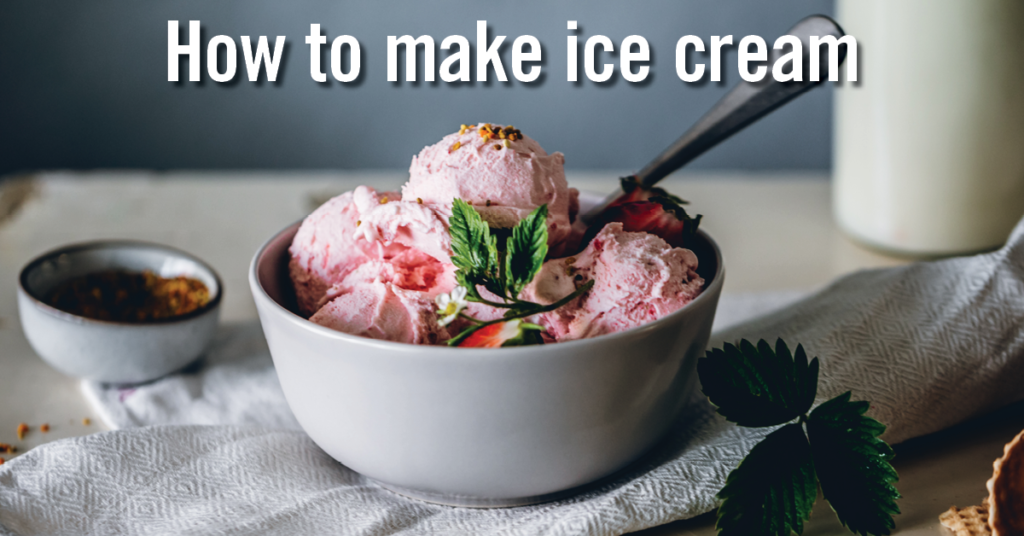
How to Make Ice Cream at Home
Ice cream is an amazing treat! Especially on those beautiful summer nights. But stopping buy your local shop can add up throughout the season. That’s why sometimes it’s nice to make your own homemade ice cream. It can sound intimidating, but it can actually be super easy. Here’s our guide to making ice cream at home!
The easiest way to make ice cream takes only four ingredients, a mason jar, and just a bit of elbow grease. 1 cup of heavy cream, 1.5 tablespoons of granulated sugar, .5 teaspoons of vanilla extract, and a pinch of salt is all it takes. Add these ingredients to a mason jar, twist the lid on tight, and shake. This is where the elbow grease comes in. The mixture needs a good shake for 4 to 5 minutes, if you can call in some backup or other members of the household that will certainly help. Just tell them they will be getting ice cream out of the deal!
Once it’s nice and shaken, the mixture will have doubled in size and nicely coats the back of a spoon. Once you’ve reached this point you know you’re ready for the next step…freezing! Store the jar in the freezer and in about 3 hours, you should have created firm, scoopable ice cream. This is the simplest way, but definitely add in your own flavorings to the base or toppings to the final ice cream product.
You can also make ice cream in plastic baggie at home. Add the same ingredients to small, resealable plastic bag, make sure all the excess air is out and the bag is sealed tightly. Meanwhile, combine salt and ice in a large resealable plastic bag. Place the small bag inside the large bag and shake, elbow grease again, but this time for 7 to 10 minutes, until the ice cream hardens. Remove from the bag and enjoy!
Sources:
https://www.delish.com/cooking/recipe-ideas/recipes/a54721/ice-cream-in-a-bag-recipe / https://www.mentalfloss.com/posts/how-to-make-simple-homemade-ice-cream
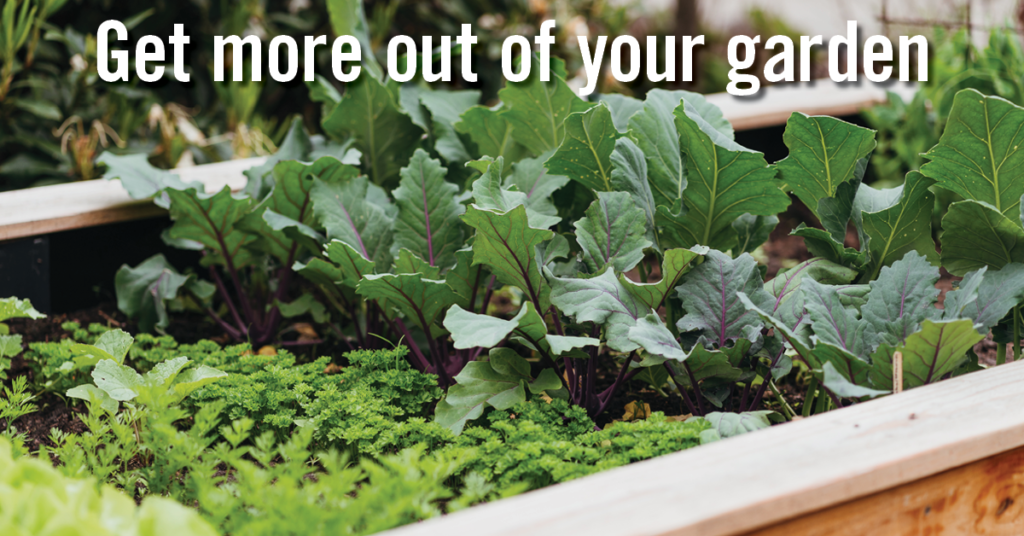
Vegetable Storage Hacks!
Mia Teal
E-Commerce Marketing Intern
If you are someone that enjoys growing a garden in the summer and is dedicated to taking care of it, you may be experiencing an overflowing volume of vegetables. While having a surplus is a good thing, you might be running out of people to share your vegetables with! We have some tips and tricks on how to store your vegetables to extend their lifespan, as well as delicious recipes that can be made. After all, summer is winding down and we would hate to have you lose all your hard work.
When storing your produce, you first need to consider what types of vegetables you have and whether it should be stored in a room-temperature area or in a refrigerator. For example, potatoes, sweet potatoes, squash, garlic, tomatoes, and onions should be stored at room temperature, like a counter or kitchen table. Additionally, these types of produce should not be covered by a bag to allow them to breathe.
On the contrary, vegetables that should be refrigerated and stored in a sealed container or Ziploc bag include leafy greens, broccoli, cauliflower, radishes and carrots. By refrigerating produce in a sealed Ziploc bag, the cool moisture is held in. Additionally, ensure that the green tops of the radishes and carrots are removed prior to storage.
When storing your produce, be wary of what items you store next to each other. Apples should not be refrigerated directly next to leafy greens, broccoli, or cabbage due to ethylene gas that apples produce. This type of gas begins the ripening process and as apples begin to ripen, more ethylene gas is produced. Leafy greens are sensitive to ethylene gas, and by placing these next to produce like apples, you may lose your lettuce sooner than expected!
It is important to note that regardless of how well you store your produce, they will only last approximately one to three weeks depending on what type of vegetable it is. That is why you should always use your instinct to judge whether or not your vegetables should be consumed or thrown out.
Another great option is to try a new recipe using your fresh produce. Check out the recipes we have created below!
Spinach & Apple Salad with Raspberry Vinaigrette : This combination of fresh apples, tomatoes, and spinach mixed with pecans and Gorgonzola cheese is the perfect side salad at dinner!
Instant Pot® Tortellini & Vegetable Soup: While this recipe calls for frozen vegetables, replace it with vegetables of your choice from the garden!
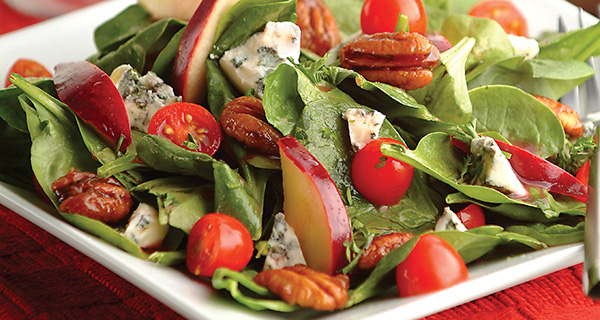
Air Fryer Loaded-Taco Baked Potatoes with Guacamole: This baked potato is filling, healthy, and delicious for even the pickiest of eaters! Be sure to stop by your local Price Chopper or Market 32 for PICS cheese and sour cream.
Open-Faced Butternut Squash and Kale Omelet: This hearty and healthy breakfast is delicious and easy to make! All you need are PICS eggs and bacon, your garden vegetables, and spices of your choice.
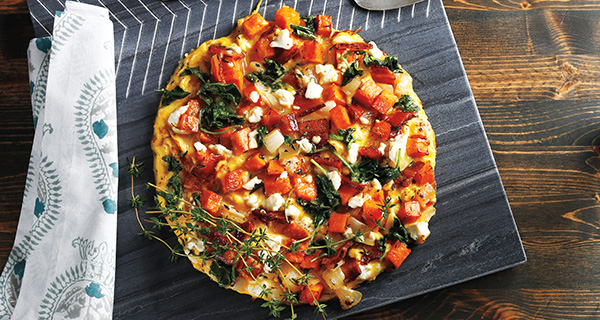
Happy Gardening!

Are You Ready For Your Summer Getaway?
Mia Teal
E-Commerce Marketing Intern
Nothing says summer like a nice, relaxing vacation with friends and family. Whether you are a lake or a beach person, Price Chopper and Market 32 want to make sure you have everything you need for your trip! If you are looking for new places to vacation this summer, you are in luck. Check out some great getaway spots below!
Lake George (Lake George, NY): Located in Upstate New York, Lake George has a variety of fun options. Whether you want to lounge by the beach, challenge your athletic abilities at Adirondack Extreme, or take a boat cruise of the lake, Lake George has an option for everyone!
Cape Cod (Cape Cod, MA): Cape Cod is booming with things to do, which makes this location a very popular destination in the summertime. Be sure to try out some amazing lobster rolls and other seafood restaurants while you are there!
Crystal Lake (Barton, VT): Located in the beautiful state of Vermont, Crystal Lake is three miles long and one mile in width. This destination has a variety of “outdoorsy” activities ranging from boating, paddle boarding, picnicking, and fishing.
duBois Beach (Stonington, CT): Located right outside of Mystic, Connecticut, duBois Beach is perfect for your family. You will find that this beach is in close proximity to the downtown shops and restaurants. While you are here, don’t forget to watch the sunset. It will take your breath away!
Hampton Beach (Hampton, NH): Hampton Beach is a family-friendly beach with many different activities. You can rent a cabin or campfire right online! Make sure to pack your marshmallows!
Lake Wallenpaupack (Stroudsburg, PA): Lake Wallenpaupack is a gorgeous, 13-mile-long lake in Pennsylvania. Whether you want to hangout in the sand, play a round of miniature golf, or visit Costa’s Family Fun Park, this lake is perfect for your next trip!
Wondering what to pack for lunch and snacks while by the water? Check out some of our favorites below. Just make sure you don’t forget the ice when packing your cooler!
Last but certainly not least, bug spray and sunscreen are a must! Check out Price Chopper and Market 32’s collection below to find exactly what you need for your big trip.
Shop Lake and Beach Vacation Essentials
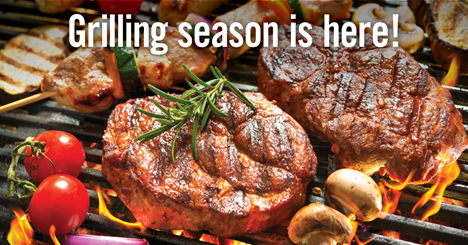
Quick & Easy Grilling Solutions
You don’t have to be a grill master to create super-simple grilled favorites. This summer, take advantage of your grill and experiment with basic cuts that offer quick, easy and satisfying solutions. Utilize less extravagant, familiar meats that are easy to prep and deliver smoky, mouthwatering meals.
Beef sirloin steak is an excellent entry-level cut that’s easy to grill. For a hearty entrée, prepare rib-eye or strip steaks with your favorite spice rub and grill to perfection! These cuts can typically feed a crowd; grill, slice, and serve them family-style. Add sirloin steak to salads or these light and flavorful Summertime Steak Lettuce Wraps. For a fun, interactive meal, grill seasoned cubes of strip steak on skewers alternated with chunks of red and green peppers, onions and cherry tomatoes.
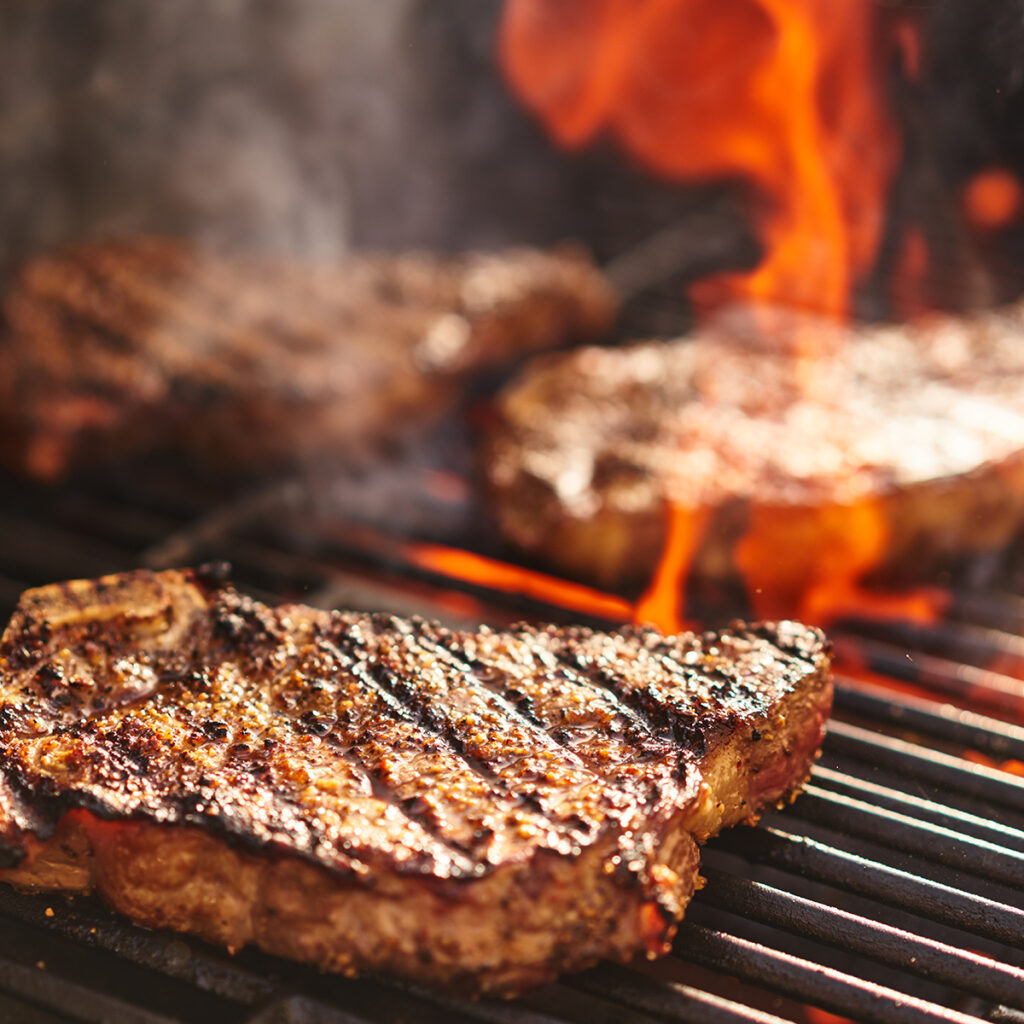
Bone-in or boneless chicken breasts and thighs are grilling favorites that are also easy to work with. Pack a punch of flavor with spice rubs or marinades; refrigerate for a few hours to allow the flavors to penetrate. Try a smoky, tangy teriyaki marinade, as seen in this Teriyaki Grilled Chicken Thighs recipe. For a simple dish accented with bright seasonal flavors, grill chicken breasts marinated in onion-poppy seed dressing and serve them over romaine and baby spinach in this Grilled Chicken Strawberry Salad. Chicken wings are also a grilled classic. Ready in minutes, this Grilled Tex-Mex Wings recipe is a perfect dinner solution for any casual or special occasion.
Cooking quickly and easily, pork shoulder steaks are an extremely underrated cut. They are half the price of traditional pork chops, and many believe them to be twice as delicious! And since they’re quite thin, they don’t take long to grill. Baste pork shoulder steaks with BBQ sauce or your favorite dressing during the last few minutes of grilling, and you’ll have a tender, hearty centerpiece.
Looking for more grilling inspiration? Find grilled recipes, videos, tips and more here!
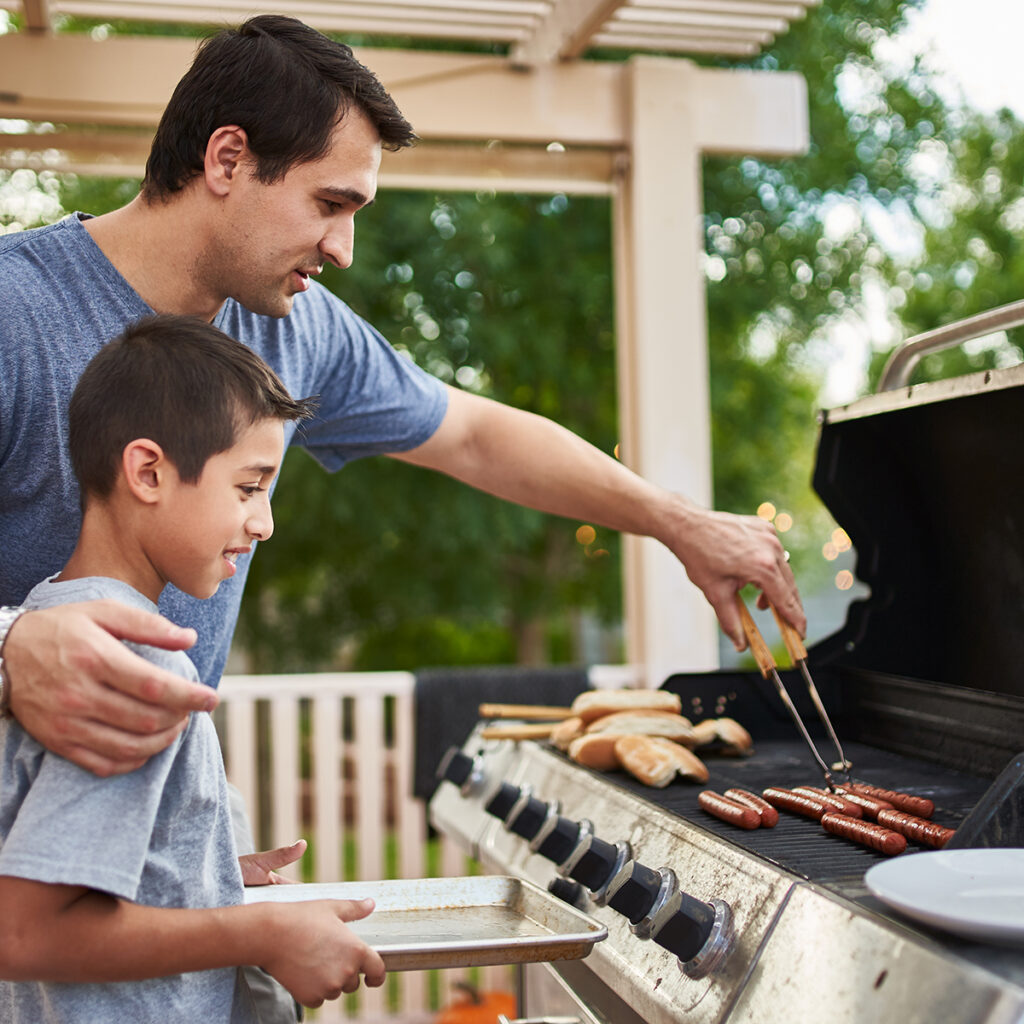
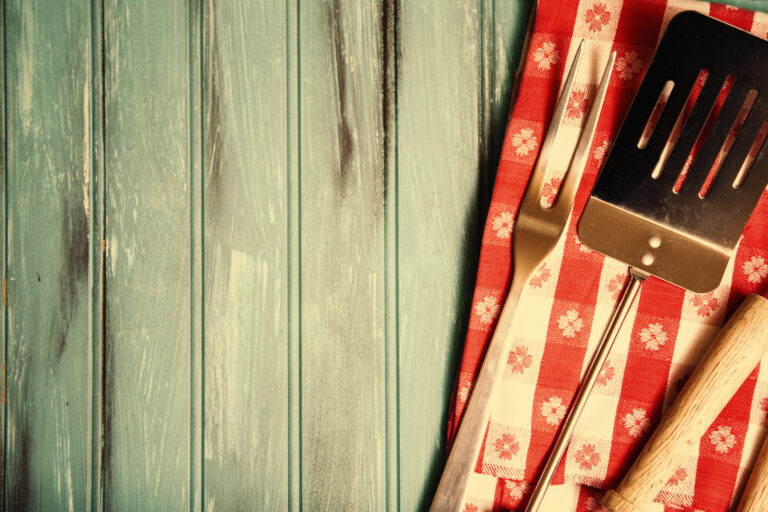
11 Summer Grillmaster Essentials
Although we may not be having the big backyard barbeques we usually crave during the cold winter months, we can still get excited to work our magic on our grills. To prepare for the upcoming weekends with weather that’s finally staying nice, we’ve put together a list of 11 grillmaster essentials to keep your grill cooking all summer long!
Kosher Salt: If you ask us, Kosher Salt is the #1 seasoning salt out there. It’s a must-have for any barbeque!
PICS Vegetable Oil: Vegetable Oil is our go-to option for lubricating the grill. It’s inexpensive when compared to alternatives like peanut and corn oil while still maintaining a very acceptable smoke point.
Olive Oil: Good Olive Oil, like Filippo Berio, will add a nice boost when drizzled on veggies and meat after you take them off the grill.
Versatile Seasoning: A versatile seasoning, like McCormick Grill Mates Montreal Steak Seasoning, is important to enhance the flavor of meat, fish, chicken, or veggies.
All-Purpose Rub: An all-purpose rub, like Stubbs BBQ, goes great on ribs, pork, or chicken!
Skewers: Skewers are essential! Go with your preference when choosing between wood and metal options.
Tongs/Spatula: Of course, a good set of tongs and a spatula are important grilling tools.
Meat Thermometer: A meat thermometer is an excellent resource for knowing when your meat is done cooking and ready-to-eat. They’re key for preventing over and under cooking.
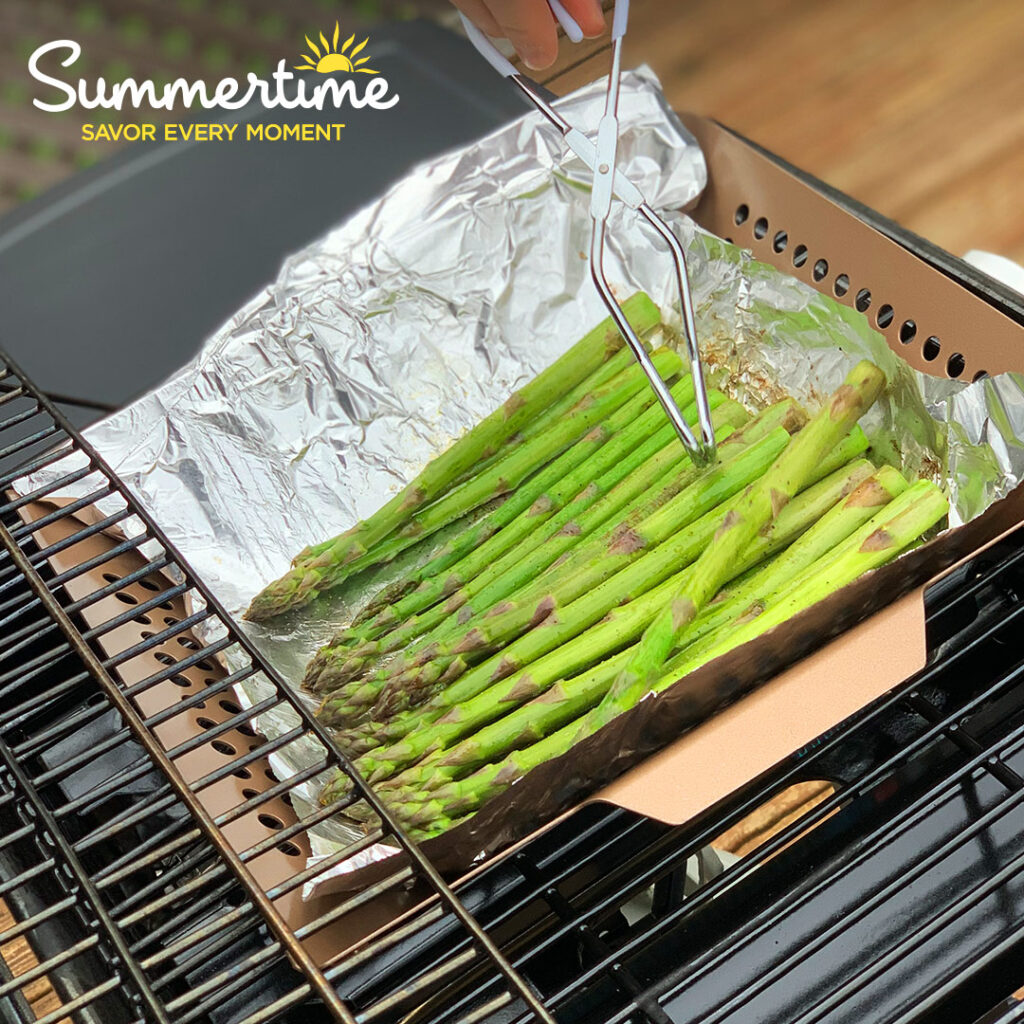
Apple Cider Vinegar: Combined with your favorite BBQ sauce, apple cider vinegar creates a tasty mop sauce or glaze for a kick of flavor. Add it in in the final 10 minutes of grilling chicken, pork, or veggies for the best result.
Aluminum Foil: Aluminum foil works well as a makeshift smoker packet on the grill. Also, it’s useful for wrapping up your vegetables, ribs, fish, and more for a different method of grilling.
Let your grill skills shine now that nicer weather is upon us. These 11 essentials will have you on the grillmaster fast track. Visit your local store or head to our website to pick up these items and more to prepare for all the grilling ahead!
Happy Grilling!
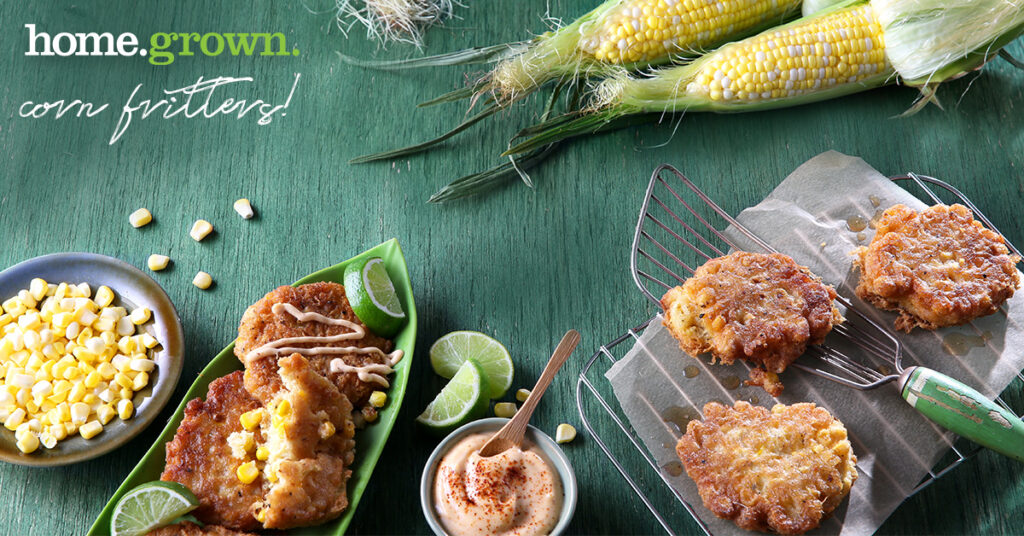
Homegrown sweet corn is one of our specialties and just one example of how we celebrate the flavors of the Northeast. We team up with a variety of Northeast farms to choose seed varieties that produce the most tender, flavorful corn you’ll find anywhere. Here are some great ways to make the most of one of our region’s best agricultural products!
- Make Fritters
In addition to eating corn right off the cob, try spicing it up with a recipe from our friends at Reeves Farm in Baldwinsville, NY – Reeves Family Corn Fritters
- Spice it Up
Try this Spicy Maple Mayo from our friends at Butternut Mountain Farm in Morristown, VT. Simply mix 1 cup mayonnaise, ¼ cup pre maple syrup, ½ juice from a fresh lime, and 1 teaspoon chipotle chili powder together for a tangy twist. Spicy Maple Mayo is one of our favorite additions to corn on the cob. Check out Butternut Mountain Farm’s website for more info – Spicy Maple Mayo.
- Eat it Fresh off the Cob
Sweet corn is even sweeter when eaten fresh off the cob. Many of our local farmer friends, like the Eckhardt Family in Stephentown, NY, enjoy sweet corn raw as much as they enjoy it cooked. It’s a simple yet very tasty option to try this season!
4. Make Mexican Street Corn Salad
Looking for a fun twist on your corn this summer? Add this recipe for Grilled Mexican Corn Street Salad – Grilled Mexican Street Corn Salad to your repertoire. A refreshing combination of flavors sure to satisfy your summer palate!
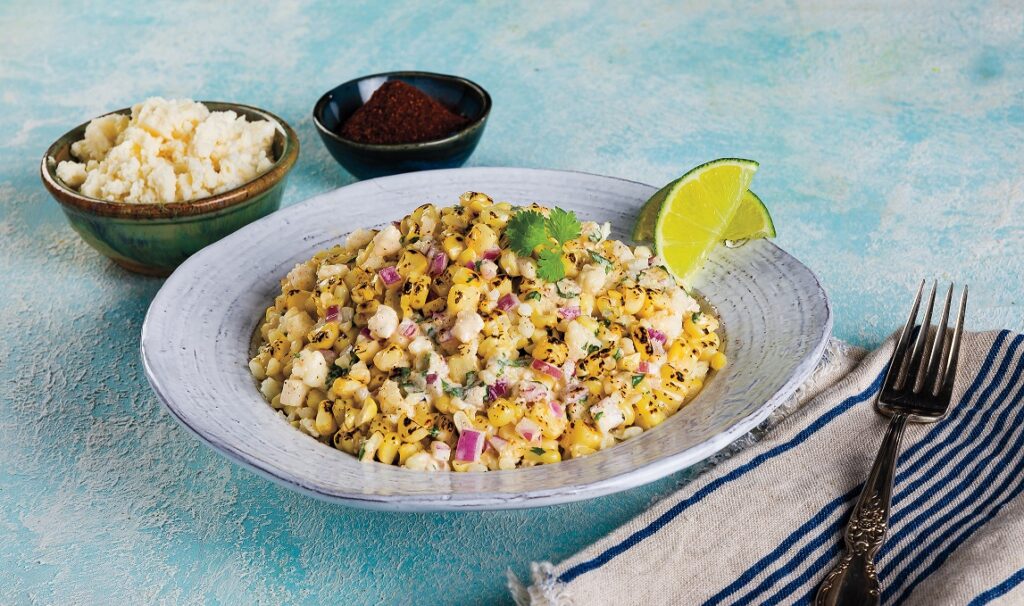
5. Kick it up with Parmesan Spread
Fire up the grill for this one! This recipe for Grilled Corn with Parmesan Spread & Basil – Grilled Corn with Parmesan Spread & Basil makes a perfect side dish for any summertime barbeque. Be prepared as your guests will be calling for more!
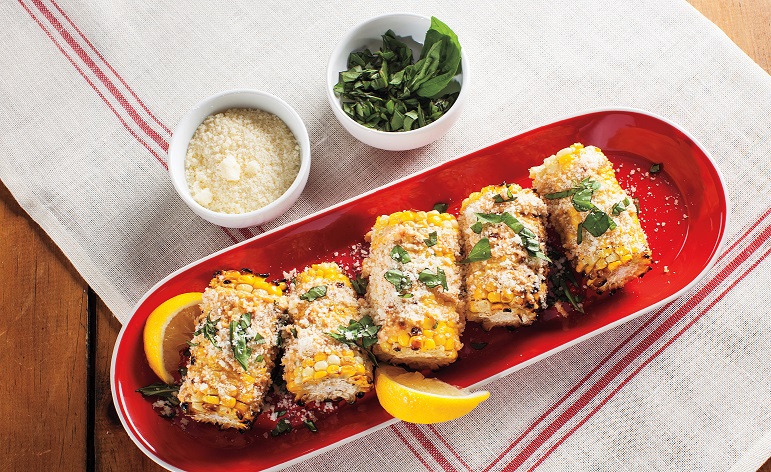
Here in the Northeast sweet corn is a summertime staple. Nothing says summer like that first bite into fresh, crisp corn on the cob. The classics are great, but we love to mix it up, and these are five great ways to do just that. Maybe you’ll even discover a new favorite! Whichever way you choose to enjoy your local corn this growing season, make sure to stop by your local Price Chopper or Market 32 for all of your summertime goods!
Written by Rainy McEwan, Jr. Business Analyst
It's officially here!
Summer is officially here! In the Northeast we know that means we finally get three lovely months of respite from the cold winter, so we have to make the most of it! Between beach trips, hiking, and days at the pool, there’s one thing they all have in common: they require energy! Instacart can save you time and energy by delivering your groceries straight to your door in as little as two hours! Now you can have a lovely picnic instead of spending that time at the store!

Sunrise hike.....
Time to pack up in preparation for a sunrise hike? You’ll want some protein on the way! Bring some granola bars or cheese and crackers to easily snack on and keep your energy up. Don’t forget plenty of water, too! Once you reach the summit, what better way to celebrate your accomplishment than a nice breakfast spread? Muffins, turnovers, or bagels, just don’t forget the coffee!

Something about the fireflies in the humid summer air feels romantic, doesn’t it? But why wait until the weekend to sweep your significant other off their feet? With Instacart, delivery is available in as little as two hours, so you can have everything right at your door soon after getting home from work! Start with a simple, light salad: greens and your favorite toppings, or save some time with a grab ‘n’ go salad! Then impress with your expertly prepared main course- some marinated chicken breasts, perhaps? Close out the meal with some fresh, ripe strawberries– light and refreshing, this aphrodisiac is everything to love about the season.
Cookout Classics
Classic cookouts require all the essentials: hot dogs, hamburgers, and snacky sides galore! You’ll need something for your guests to stack all your delicious treats on, just add some Simply Done designer tableware to your cart! But oh no, you realize you forgot potato salad and soda, and your guests are already arriving. Not a problem, Instacart here to save the day! Available at over 100 locations, just go to the website or app, add what you need to your cart and an Instacart shopper will pick up and deliver your items straight to your door! You can rest easy knowing that Instacart will be there for all your
mishaps, tight spots, and days where you really want to avoid leaving the A.C. this summer.
